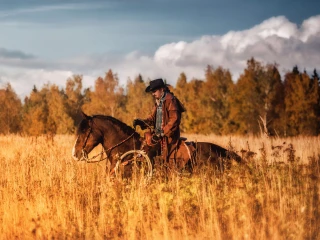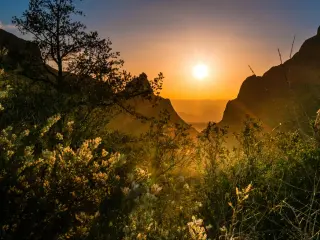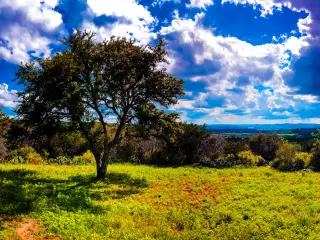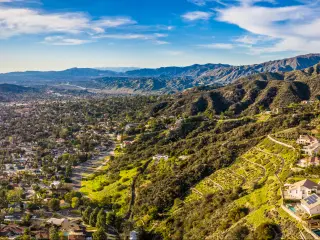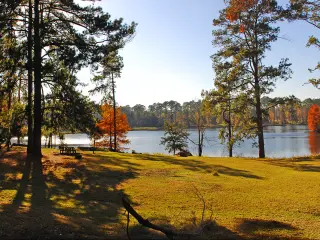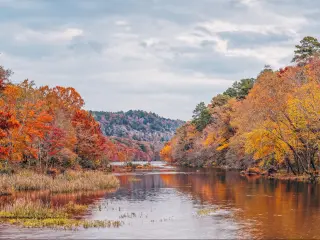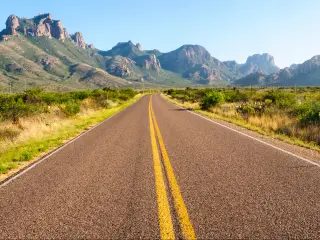Road Trip From Dallas to The Grand Canyon
A road trip from Dallas to the Grand Canyon takes you from the largest metropolitan area in Texas to the longest canyon in the world.
The 1060-mile road trip from Dallas to the Grand Canyon takes 17 hours of driving. Highlights along the route include Fort Worth, Wichita Falls, Amarillo, Santa Fe, Albuquerque and Flagstaff, as well as Cibola and Kaibab National Forests.
Read on to find out more about this incredible road trip along the most famous stretch of the legendary Route 66, finishing at a destination that has to be seen to be believed.
How far is the Grand Canyon from Dallas and how long will it take to get there?
The route for a road trip from Dallas to the Grand Canyon is a relatively straightforward one, which covers 1,060 miles and takes a little under 17 hours to complete.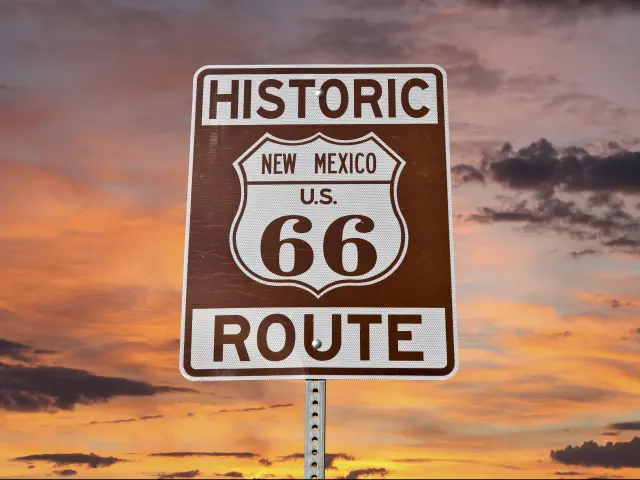
🚗 1,060 miles ⏱️ 17 hours
As you make your way to the Grand Canyon, you can explore the Cadillac Ranch in Amarillo and drive on a portion of the legendary Route 66.
Now, while this is a trip that's at the upper end of those you can make in a day, it's better off being broken up a little, so you can get more enjoyment out of the journey.
That's even more true for this particular destination. With the amount of walking you'll be doing when you reach the Grand Canyon, the last thing you want to do is burn yourself out before you get there.
Best road trip route from Dallas to the Grand Canyon
The route for our road trip from Dallas to the Grand Canyon may be long, but it is relatively straightforward.
Begin by taking State Route 183 west to Fort Worth and then change onto US-287 going northwest. You'll stay on this for 333 miles, until you reach Amarillo.
From here the remainder of the journey will largely be spent on one road, with the next 640 miles being on the I-40.
That said, this is the stretch of our journey that follows the path of the historic Route 66, so it gives you a perfect opportunity to experience the trail that so many other road-trippers have traveled before you.
This route also gives you the option to make a number of relatively short detours, depending on your preferences and time constraints. One such detour that we'd definitely recommend, however, is to the cultural hotbed of Santa Fe.
To incorporate Santa Fe into your road trip from Dallas to the Grand Canyon, simply divert from the I-40 onto US-285 at Clines Corners. From here, the journey to Santa Fe is only around 50 minutes' drive, merging onto the I-25 for the last 10 miles of the route into Santa Fe.
To make it back to the I-40 and onwards to the Grand Canyon, take the I-25 southwest back out of Santa Fe, towards Albuquerque. Like Santa Fe, Albuquerque is a great spot to stop and rest up as you make your trip westwards.
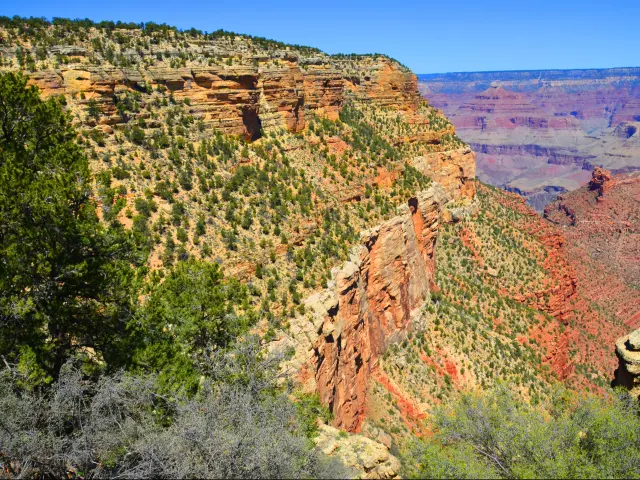
Staying on the I-40 after Albuquerque, travel another 350 miles, past Flagstaff, until you reach exit 165 (just short of Williams, Arizona), joining AZ-64 heading north. This road takes you all the way to Grand Canyon Village, passing through the scenic Kaibab National Forest.
Best places to stop between Dallas and the Grand Canyon
So, now that we've suggested that you may want to break a road trip from Dallas to the Grand Canyon into smaller sections, it seems only fair that we point out some of the best places to stay along the way.Considering how historic our destination is, it seems only fair that our stops live up to the journey, which is why they are all going to be located along the historic Route 66.
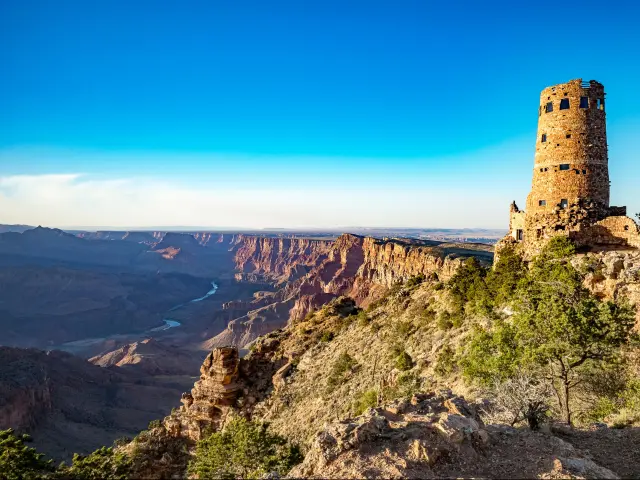
"Show me the way to Amarillo"
Our first suggested stop is located as soon as we arrive on Route 66, in the largest city in the Texas panhandle: Amarillo.
Often overlooked due to being in the more remote western side of Texas, Amarillo is a beautiful city with many more stereotypical Texan charm stereotypes than you're likely to find in big cities like Houston.
If you want to experience the great steaks and cowboy boots you'll see in the films, then Amarillo will surely not disappoint.
However, it's not just what you'll find within the city limits that make it such a great destination, as some fabulous attractions are dotted around the surrounding area.
One must-see is the Caprock Canyons State Park And Trailway, which is home to the official Texan bison herd. The Alibates Flint Quarry National Monument, where ancient native settlers constructed tools and weapons, is another highlight close by. You even have the Palo Duro Canyon State Park, the second-largest canyon system in the country.
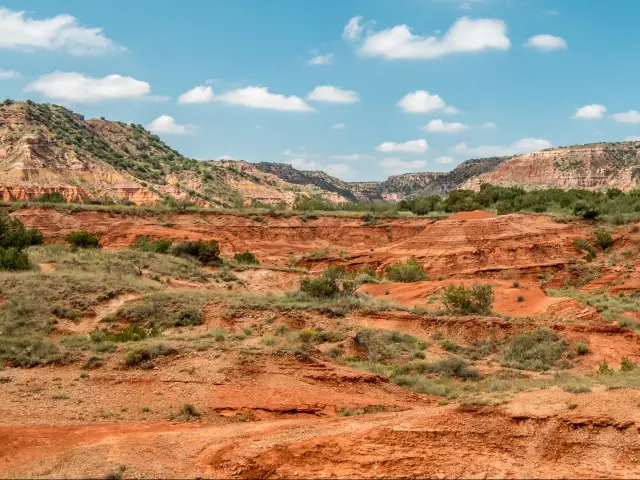
What better way to get a real appreciation for how vast the Grand Canyon truly is than to see its closest competition first!
As far as your accommodation goes, The Barfield, Autograph Collection in Amarillo strikes the perfect balance between luxury and convenience. Located just a stone's throw away from I-40 The Barfield - with its modern luxury design and impeccable service - offers all that a weary road tripper could wish for (and more!).
Get acquainted with the Duke City
When you mention “The Duke” around this part of the world, many will understandably think you're talking about the legendary John Wayne. However, in this instance, The Duke City is the nickname given to the most populous city in New Mexico, Albuquerque.
On a trip across three states it only seems fair to give you an option in each and, as far as our path through New Mexico goes, this is it.
While Albuquerque is a beautiful and bustling city, it is (much like Amarillo) some of the surrounding areas that really make it stand out. Attractions such as the ancient wonders of Bandelier National Monument, the natural beauty of Cibola National Forest and the incredible wildlife of Sevilleta National Wildlife Refuge all lie a short distance from the city.

This gives us a perfect opportunity to experience a little New Mexican culture, on our way through a state that so many simply allow to pass them by on their travels.
For a real taste of Albuquerque, you can't go wrong by staying at the modern and elegant Hotel Chaco. Located in the Old Town region of the city, this historic building features all the amenities you would find in a top-class hotel, allowing you to be right in the heart of the city's history, while still enjoying some of the finer things you look for on a vacation.
The City Of Seven Wonders
Our final and - if we're being honest - perhaps best stop on our route is the city of Flagstaff.
What makes Flagstaff such a great place to stop is its location. Not only is it located directly on Route 66 and less than 80 miles from the Grand Canyon itself, but it is also surrounded by other, perhaps lesser-known attractions.
You have the sprawling Ponderosa pines in Coconino National Forest, the towering heights of Humphrey's Peak, the rugged beauty of Sunset Crater Volcano National Monument, the history of Wupatki National Monument, the flowing waters of Slide Rock State Park, the ancient dwellings of Walnut Canyon National Monument and the crystal waters of Mormon Lake.
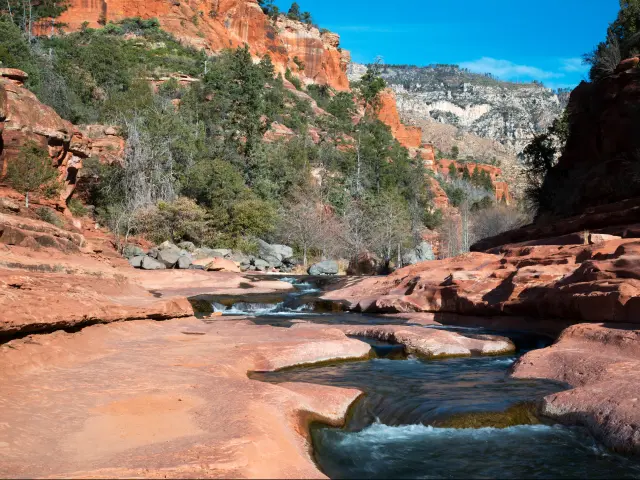
As you can see, Flagstaff didn't earn its nickname of “The City Of Seven Wonders” for nothing, as there are incredible things to do and see in every direction. A perfect stop for those of us who love the great outdoors.
To top it off, we highly recommend staying at the picturesque Little America Hotel, nestled perfectly among the Ponderosa Pine Forest. A beautiful hotel designed like a traditional log cabin and lodge, located right on the edge of Coconino National Forest, this is the perfect option for anyone wanting to make their entire trip about the natural beauty of the area.
Don't let the rustic beauty fool you though, this is still a modern hotel, complete with all the trimmings like luxury furnishings, Wi-Fi and a swimming pool, all ideal for when you want to relax after a long hard day.
Things to see on a road trip from Dallas to the Grand Canyon
So, with a road trip from Dallas to the Grand Canyon taking you along one of America's most famous roads, to one of its most visited attractions, you'd imagine there would be plenty to do and see along the way.Well, you would be correct in thinking that and the following list are our personal top picks for things to see en route to the Grand Canyon.
- Wichita Falls, Texas - One of the slowest developing cities in the nation, its population has only increased by a mere 23 people in the last decade.
- Amarillo, Texas - The largest city in the Texas panhandle, a great base for exploring local attractions, as well as recharging your batteries.
- Bandelier National Monument - 33,677 acres of protected land, preserving the homes and territory of ancestral Puebloans. This area also serves as a sanctuary for a wide variety of wildlife.
- Cibola National Forest - Over 1.5-million acres of forest in northern New Mexico.
- Route 66 - Known as the mother road, it is one of the most famous roads in the entire country, if not the entire world. The essential road tripper bucket list item!
- Albuquerque, New Mexico - Most populous city in the state of New Mexico and a delight for culture vultures and foodies alike.
- El Malpais Monument and National Conservation Area - Area of volcanic lands and stunning natural monuments.
- Gallup, New Mexico - Small town with a big history, known for its art, cars and Indian trading posts.
- Navajo Nation - Home to over 170,000 Native Americans, the largest such population in the country.
- Petrified Forest National Park - A fabulous national park, filled with history and natural beauty spots.
- Flagstaff, Arizona - Gateway to the Grand Canyon, located in one of the greenest parts of Arizona thanks to the beautiful Ponderosa pines that surround the city.
- Coconino National Forest - Almost 3000 square miles of varied terrain. One of the most diverse National Forests in the United States, with landscapes ranging from red rock to lush pine forest.
- Humphreys Peak - The highest point in the state of Arizona, formed from a group of dormant volcanic peaks. Humphreys Peak is the tallest peak in the Kachina Peaks Wilderness area, within Coconino National Forest, standing at an elevation of 12,637 feet.
- Kaibab National Forest - Sprawling forest on the edge of the legendary canyon. A great area to relax and refresh yourself before heading on to your destination!
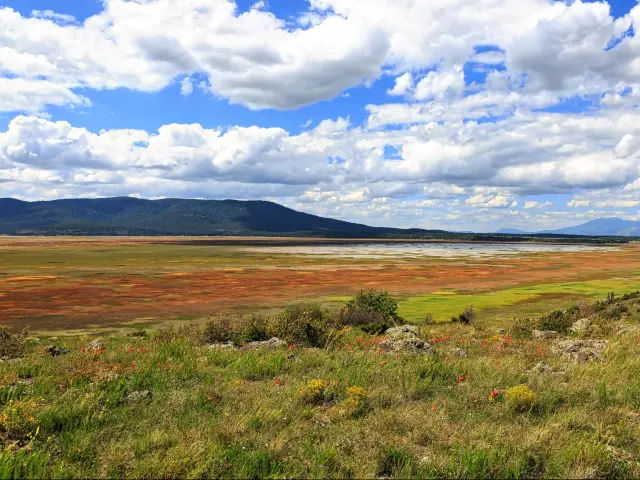
Best time to go on a road trip from Dallas to the Grand Canyon
Traveling to an attraction in the desert, you would be forgiven for thinking that it doesn't matter when you make a road trip from Dallas to the Grand Canyon.However, in reality, the Grand Canyon is known for extreme weather at both ends of the spectrum, with unrelenting heat during the height of summer and snows great enough to close off parts of the park during the winter.
That's why it's extremely important to select the correct time to make such a trip, so you can avoid both of these extremes. For that reason, the best times to visit the Grand Canyon are at the beginning and end of summer, in May and June or August and September.
This allows you to ensure that the snows have either melted away or not arrived yet, so the entire park is available to you, while at the same time avoiding the overpowering heat that is often present in July.

